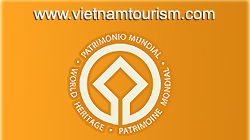

The Space of gong culture in Central Highlands (Intangible cultural heritage)
Copyright © Vietnam National Authority of Tourism
Webmaster: Tourism Information Technology Centre
Address: 80 Quan Su, Hoan Kiem Dist., Ha Noi
Experimental version
License number: 85/GP-TTńźT date of issue July 02, 2015
Webmaster: Tourism Information Technology Centre
Address: 80 Quan Su, Hoan Kiem Dist., Ha Noi
Experimental version
License number: 85/GP-TTńźT date of issue July 02, 2015









